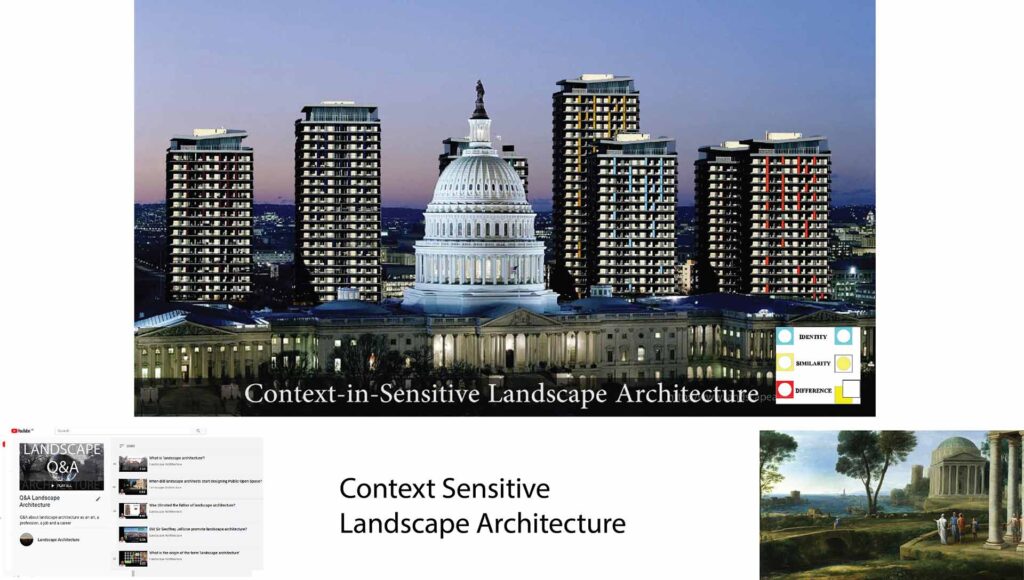What is context-sensitive design theory? Q&A

Question What are context-sensitive design and context theory?
Short answer: It is the body of theory which underpins context-sensitive design. Or, in Alexander Pope’s phrase, how to consult the Genius of the Place
Longer answer: Richard Sennett, a famous sociologist, attacked one of the fundamental principles of landscape architecture, in 2013. He did so by being, in my view, too absolutist in his persuasive argument for open cities and against closed cities. In a lecture, delivered to the Harvard Graduate School of Design, Sennett used the phrase ‘Tyranny of Context’ to damn the principle that development projects should respond to local character. Alexander Pope poetized an opposite policy with his advice to ‘Consult the Genius of the Place’. Without this principle, there is no need to conserve wonderful cities or beautiful landscapes. You can just fill ‘em up with standard blocks and architectural oddities. And you can make the world’s cities indistinguishable, regardless of cultural and environmental context.
To my mind, this is a really bad idea. And it contains nothing of the craftsman ideal Sennett has been writing about in his recent books.
- Sennett sees architecturally context-sensitive designs as, I quote, ‘a fundamental challenge to us politically’. Since he’s a sociologist he may mean a challenge to the liberal orthodoxy of anything goes postmodernism.
- Sennett’s audience, of designers, responds warmly to his hatred of contextualism.
